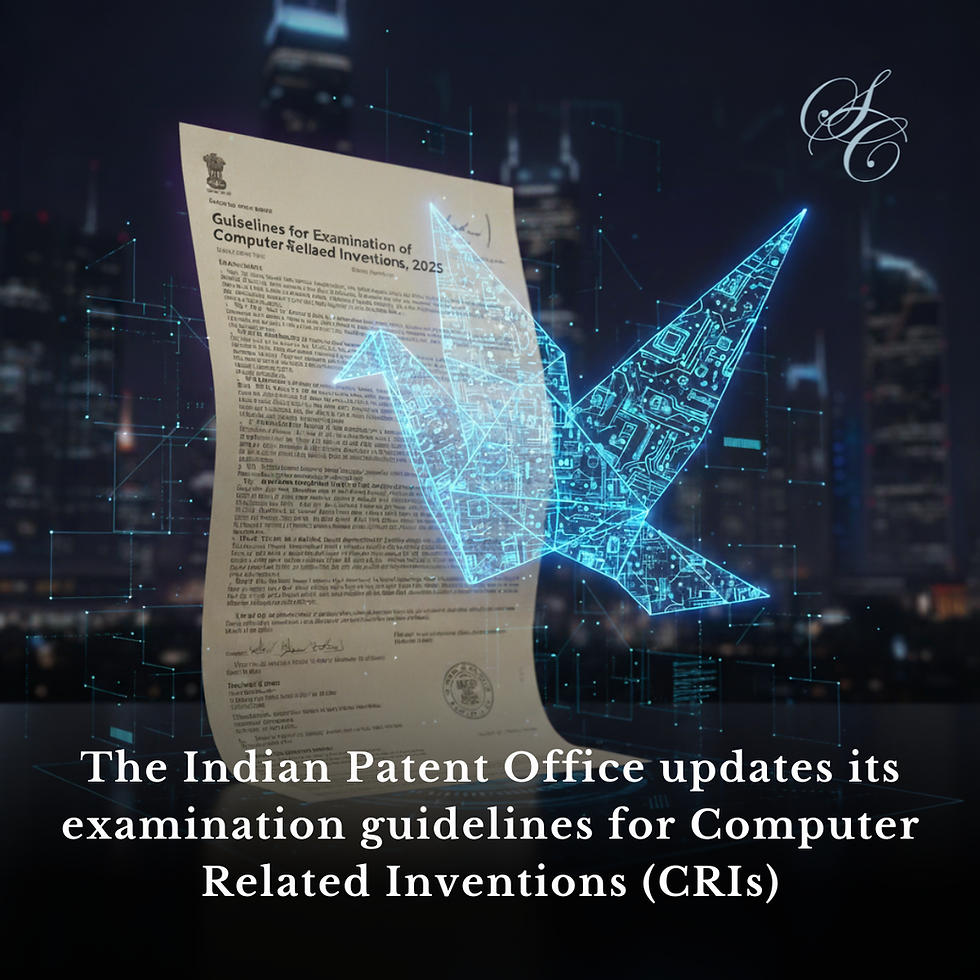TRADE MARK RULES
- Sarwajeet Singh
- Mar 7, 2017
- 3 min read
On March 6, 2017, the Government of India (“GOI”) announced new rules governing trade mark practice. These rules are effective with immediate effect.
Set out below is a summary of changes brought about by the new rules.
Fee Increase: The filing and processing fees have been increased. Online filings will cost less compared to paper filings. For applications, the filing fee has more than doubled to INR 9,000 (approximately USD 134, as per today’s exchange rate) (small enterprises and start-ups pay approximately USD 67). The filing fee for a renewal is also INR 9,000 (approximately USD 134, as per today’s exchange rate). In respect of oppositions, there is a marginal increase from INR 2,500 to INR 2,700 (approximately USD 40). Increase in fee is also prevalent for assignments, change in name requests as well.
Affidavits of Use: The new rules seem to state that if an application is based on use, the applicant will be required to furnish an Affidavit of Use. Although the rules do not explicitly state so, it is possible to file an Affidavit of Use after the filing date. We believe that important change has been brought about because there have been many instances of false use dates in applications.
Renewals: It is now possible to renew a registration one year prior to the renewal deadline (the old rules prescribed a six-month period).
Well- Known Marks: The rules lay out a well-defined procedure for granting well-known status to a mark. However, the rules do not set a time limit to review and dispose of such applications for well-known mark recognition. Interested applicants must pay a fee of INR 1,00,000 (approximately USD 1500, at today’s exchange rate). The high fee appears to be set in order to reduce the number of requests received.
Email Addresses of Applicants: The rules make it mandatory for applicants and other parties filing documents to provide an email address to the Trade Marks Registry.
Specification of Goods/ Services: The rules will make it harder for applicants to file for class headings or file broadly. The new rules indicate that the Trade Marks Office will now refuse the application unless there is a justification that the applicant is using or proposing to use the mark in respect of such a broad specification of goods and services. This seems to be a measure to discourage applicants from applying for the class heading and claiming rights in respect of goods and services that the mark may not cover and may never intend to cover.
Non- Traditional Marks: The new rules expressly state that applications to register 3- dimensional marks, shape marks as well as sound marks will be accepted. Furthermore, in a welcome step, the Trade Marks Office will accept a thirty second sound clip in mp3 format which can be uploaded when the applicant is applying for a sound mark.
Oppositions: It is now possible to file a single Notice of Opposition against a multi-class application. The Registrar is required ordinarily to serve a Notice of Opposition on applicants within 3 months from date of receipt. If an applicant files a counter statement to a Notice of Opposition on the basis of a copy of a Notice of Opposition that is available on the web site of the Trade Marks Office, then requirement to serve the Notice of Opposition is dispensed with. Additionally, to prevent applicants from claiming numerous adjournments in respect of the final hearing, the number of adjournments that can be claimed has been fixed at two with the time limit between each adjournment not being more than thirty days.
Imposition of Costs: Significantly, the new rules impose costs upon opposers that file, but do not prosecute, oppositions, and applicants who had reasonable notice of oppositions, but fail to file counter statements.
Video Conferencing: It will now be possible to conduct oral hearings through video conference.




Comments